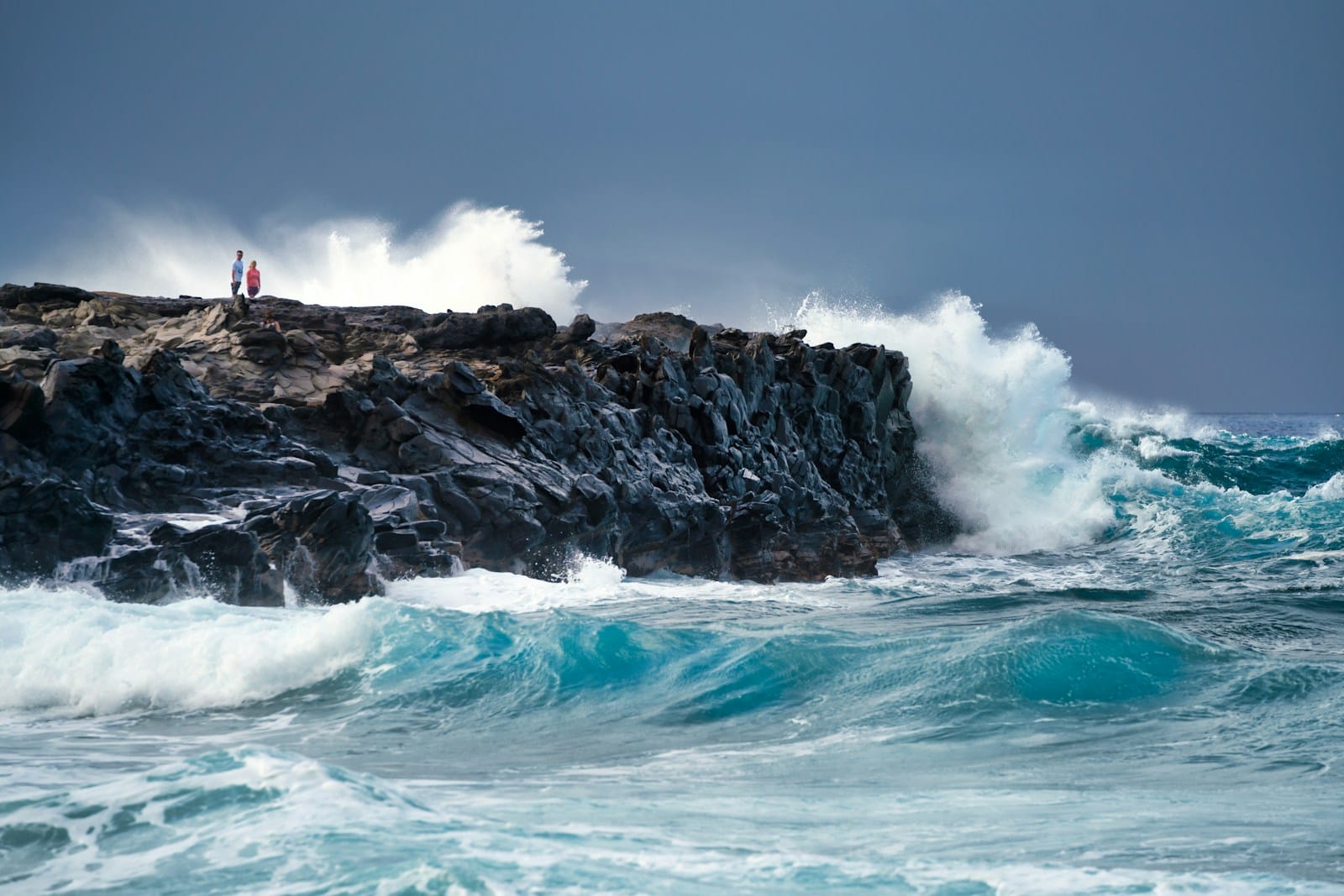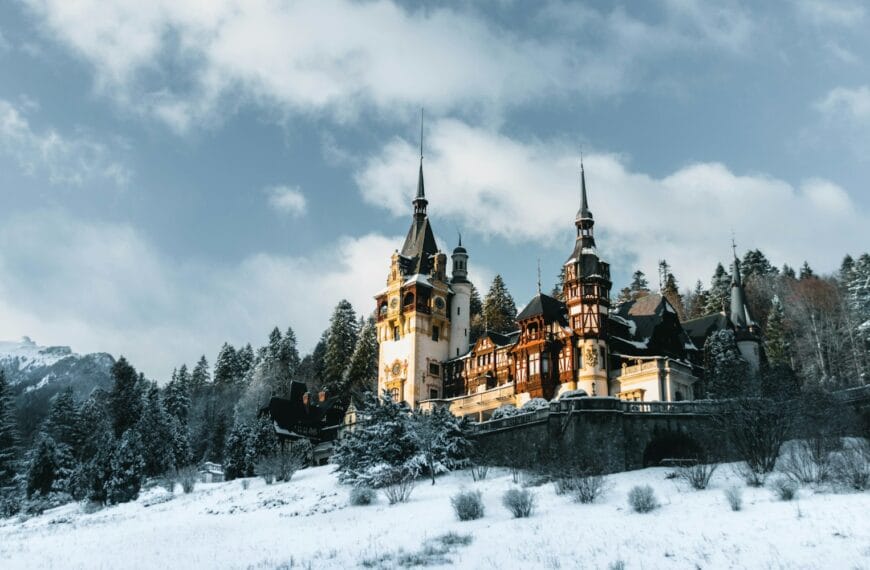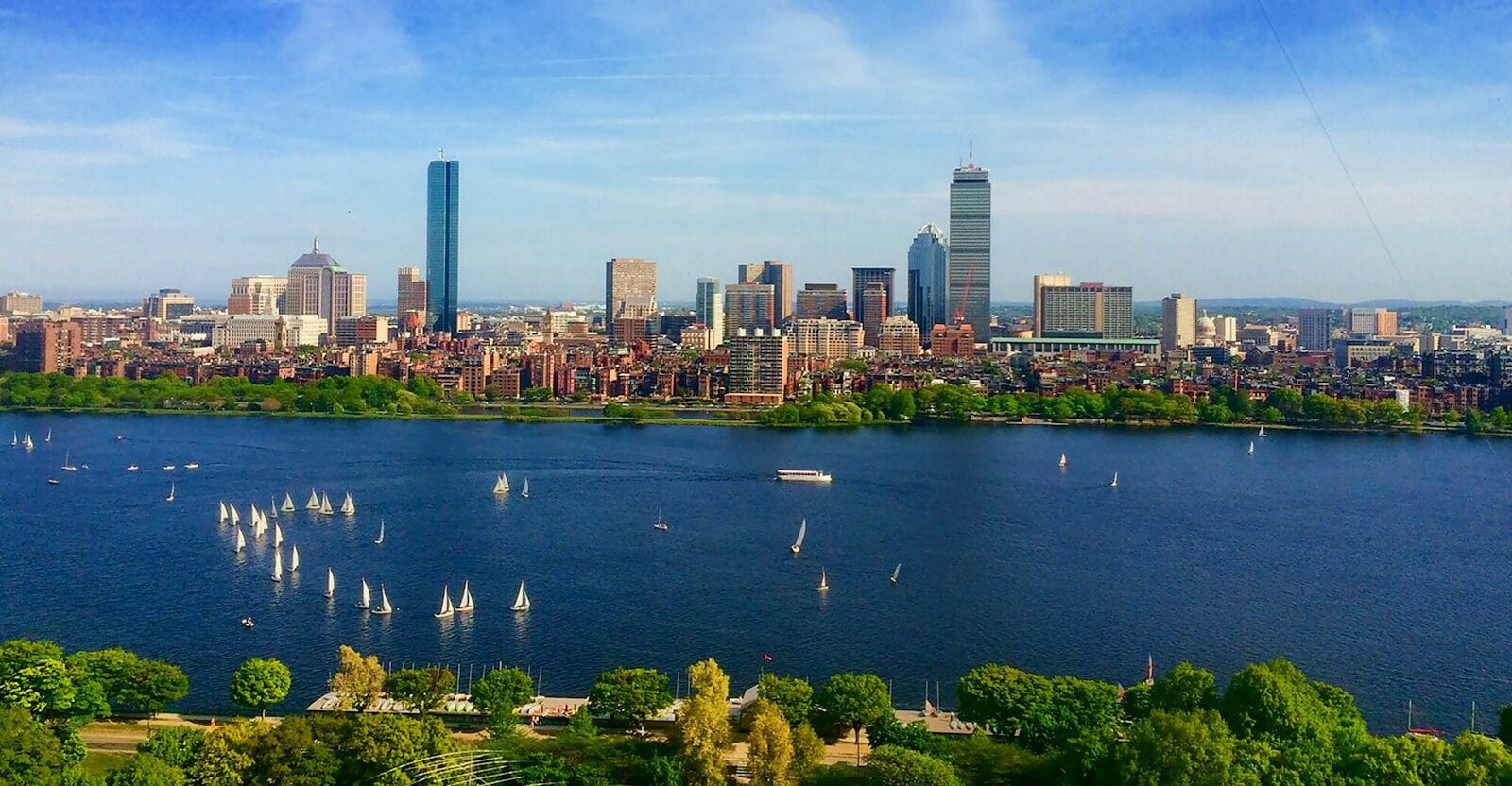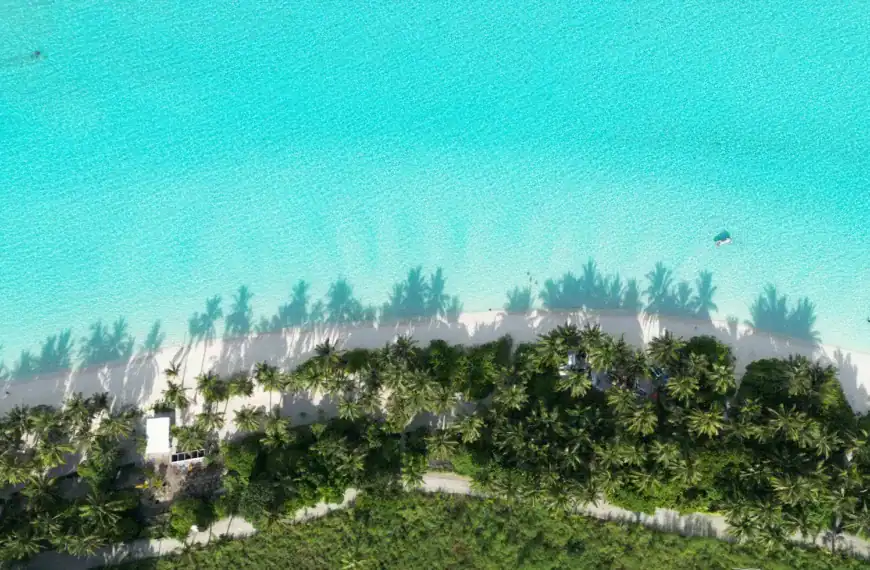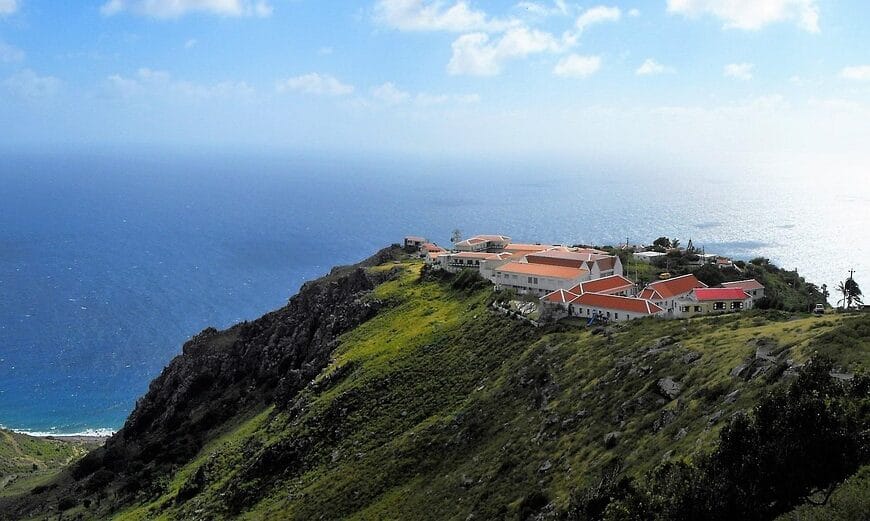Maui Natural Wonders: Hana Waterfalls, Reefs & Volcano
Intro to Maui Natural Wonders
Imagine standing at the summit of a volcanic crater as the sunrise paints the sky in lavender and gold. Feel the spray of jungle waterfalls on your skin, hike through bamboo forests, and listen to waves crash against black sand beaches. In Maui, nature doesn’t just surround you — it moves through you.
This Maui natural wonders take center stage in this Hawaii travel guide, which highlights must-see attractions, cultural experiences, and the best Hawaii tours to explore the island’s breathtaking beauty.
💡Quick Facts:
Continent: North America
Country: United States
Area Covered: Entire island of Maui (1,883 km² / 727 mi²)
Population (Island-wide): ~165,000
Natural Zones: Haleakalā Crater, ʻĪao Valley, Road to Hāna, West Maui Mountains, coastal cliffs, lava fields, coral reefs
Language(s): English (official), Hawaiian recognized
Currency: U.S. Dollar (USD)
Time Zone: Hawaii Standard Time (UTC−10); no DST
Airport Access: Kahului Airport (OGG) – gateway to all natural zones
Climate: Tropical with microclimates – dry west/south, wet east/north
Known For: Sunrise at Haleakalā, waterfalls, blowholes, snorkeling reefs, black/red/white sand beaches, lava rock coastlines
🛂Arrival Info:
Entry: U.S. entry rules apply. ESTA/eVisa waiver for eligible travelers.
Domestic Flights: Frequent from Honolulu and mainland U.S. cities.
Airports: Kahului (OGG) is main gateway; Hana and Kapalua serve interisland flights.
Cruise Access: Maui is a stop for major Hawaii cruise itineraries.
🏥Health Info:
Ocean Hazards: Strong currents, high surf, sharp coral – follow local signage
Hiking Safety: Volcano rim hikes, bamboo forest trails – carry water, start early
Altitude: Haleakalā summit exceeds 10,000 ft – may trigger altitude symptoms
Emergency Services: Dial 911; rescue teams active in hiking zones
Travel Insurance: Strongly recommended for hiking, diving, and seaplane tours
🚑 Check travel insurance options for travel emergencies, delays, and medical needs abroad — Get coverage here
💉 Stay Informed with Official Updates: WHO – International Travel & Health | CDC – Travel health updates
🚨Travel Advisory:
Park Regulations: Permit required for Haleakalā sunrise; no drones in national parks
Weather Risks: Flash floods on Road to Hāna and in valleys; avoid trails during rain
Recent Wildfires: Monitor Lahaina and West Maui access if active alerts exist
🌍Track Real-Time Official Updates: US Travel Advisory | UK Foreign Travel Advice | Government of Canada | NZ SafeTravel
🥳Natural Highlights:
Haleakalā National Park: Dormant shield volcano with sunrise summit views, crater hikes, and endangered silversword plants.
Road to Hana: Iconic 64-mile coastal drive with waterfalls, bamboo forests, and cliffside views.
ʻĪao Valley State Monument: Towering green peaks, ʻĪao Needle rock formation, cultural heritage site.
Molokini Crater: Submerged volcanic caldera offering world-class snorkeling and diving.
Whale Watching: Humpback Whale Marine Sanctuary off Lahaina, peak Dec–Apr.
Black Sand Beaches: Waiʻānapanapa State Park near Hana with volcanic coastline and sea caves.
Red Sand Beach (Kaihalulu): Secluded cove with striking iron-rich sand.
Upcountry Maui: Lavender farms, rolling hills, and forest reserves on Haleakalā’s slopes.
💰Visitor Info:
Currency: U.S. Dollar (USD)
Credit Cards: Widely accepted across Maui, including hotels, restaurants, shops, and tour operators
ATMs: Readily available in Kahului, Lahaina, Kihei, and major resort areas; limited in remote regions like Hāna
Cash Tips: Useful for farmers’ markets, roadside fruit stands, and smaller excursions
Tipping Practices:
– Restaurants: 15–20%
– Tour guides: $5–$20 per person depending on length
– Valets/bellhops: $2–$5 per service
Duty-Free: Not applicable for domestic U.S. arrivals
– International travelers flying home from OGG may access duty-free shops at their connecting airport (e.g., LAX, SEA)
🛫Airports:
Kahului Airport (OGG) – Main Gateway
Location: Central Maui
Airlines: Hawaiian, Alaska, Southwest, United, American, Delta, Air Canada
Ground Transport: Taxis, rideshares, shuttles, rental cars
Kapalua Airport (JHM)
Location: West Maui (Kāʻanapali area)
Inter-island flights only
Hāna Airport (HNM)
Location: East Maui
Used for small charters and emergency flights
🧳 Delayed or canceled flight? Check if you’re eligible for compensation
🚍Transport:
Car Rentals: Essential; limited public transport.
Public Transit: Maui Bus covers major towns but not rural attractions.
Ride-hailing: Uber/Lyft limited; taxis costly.
Driving: Right-hand traffic; Hana Highway scenic but narrow/curvy.
Biking: Popular in Haleakalā downhill tours; otherwise challenging terrain.
🚗 Book reliable airport transfers and in-city rides in advance. Reserve your ride here
🛰️Connectivity:
SIM/eSIM: All major U.S. carriers (AT&T, Verizon, T-Mobile) with strong coverage in towns.
Wi-Fi: Standard in hotels/cafes; variable in remote areas.
Roaming: Domestic for U.S. travelers; international roaming expensive.
🛜 Stay connected abroad with affordable eSIM data packs. Get your eSIM here
📜Laws & Etiquette:
Drinking Age: 21; alcohol sales restricted after 2 AM.
Smoking/Vaping: Banned in restaurants, bars, beaches, and parks.
Cultural Etiquette: Respect sacred sites, do not touch heiau (temples).
Environmental Laws: Reef-safe sunscreen required by law.
LGBTQ+: Protected rights; widely accepted.
👮Emergency Info:
Emergency Number (U.S.): 911 – Covers police, fire, ambulance, ocean rescue
Main Hospital:
Maui Memorial Medical Center, Wailuku
24/7 emergency care and trauma services
Urgent Care Clinics:
Located in Kihei, Lahaina, Kahului, and Pukalani
Rescue Services:
Ocean and hiking rescues managed by Maui Fire Department and volunteer teams
Use “What3Words” app or share GPS if lost in remote areas
Tourist Help Line: Not specific to Maui; consult local tourism kiosks or hotel concierge for guidance
🏛️ Use embassy locator tools: Embassies Worldwide
🌞Weather:
Summit: Haleakalā can be near freezing at dawn, even in summer.
Coastline: Kihei/Lahaina are dry and sunny; Hana is wet and lush.
Rainfall: Heaviest Nov–Mar, especially on windward/east side.
🌦️ Stay prepared—check the weather forecast for your destination — Weather Forecast
Why Visit These Maui Attractions?
Maui is a living gallery of volcanic landscapes, lush rainforests, and coastal beauty that defines the spirit of Hawai‘i. From Haleakalā’s lunar peaks to Hana’s winding waterfalls, the island is home to a powerful blend of natural energy, native mythology, and rare biodiversity. Each attraction isn’t just a destination — it’s an invitation to slow down, take in the land, and reconnect with nature.
Whether you’re an adventure traveler chasing waterfalls or a slow traveler seeking soul-soothing sunsets, Maui’s natural wonders promise unforgettable memories. Booking guided tours helps skip long lines, access hard-to-reach places, and deepen your experience through local insights.
Iconic Landmarks and Historic Sites
Haleakalā National Park
Haleakalā, meaning “House of the Sun,” is Maui’s most iconic natural wonder. The dormant volcano towers over the island at 10,023 feet and is the sacred home of ancient Hawaiian deities.
Visitors flock here for sunrise — a ritual-like experience above the clouds. The crater itself is massive and surreal, resembling a Martian landscape with red cinder cones and silence that humbles.
Tips: Sunrise requires a reservation via recreation.gov. Dress warmly — it gets below freezing. Later in the day, hike the Sliding Sands Trail or explore Kipahulu Valley near Hana.
ʻĪao Valley State Monument
This lush green valley is the site of one of the most important battles in Hawaiian history. The needle-like ʻĪao Pinnacle rises 1,200 feet from the forest floor, surrounded by mist and mossy cliffs.
It’s sacred to native Hawaiians and ideal for an easy nature walk that still packs a cultural punch.
Tips: Open from 7 AM to 6 PM; entry fee for non-residents. Go early for clear views. It often rains by mid-morning.
Lahaina Banyan Tree Park (Reopening Phase)
Though damaged by the 2023 wildfires, Lahaina’s historic banyan tree — one of the largest in the U.S. — is being nurtured back to life. Standing in this 150-year-old canopy once symbolized the heart of Lahaina town and Hawaiian resilience.
Tips: Check current access updates and community-led efforts to support Lahaina’s recovery.
Museums, Galleries & Cultural Spaces
While Maui’s natural beauty takes center stage, it’s deeply intertwined with Hawaiian culture. Several venues help you appreciate the history and meaning behind the land.
Bailey House Museum (Hale Hōʻikeʻike)
Located in Wailuku, this former missionary house now preserves Hawaiian artifacts, royal portraits, and native tools. It’s one of the few places where you can dive into pre-contact history alongside colonial narratives.
Tips: Open Monday–Saturday; small entrance fee. Consider pairing with ʻĪao Valley for a full heritage loop.
Maui Arts & Cultural Center (MACC)
The island’s creative heart hosts everything from hula festivals to film screenings, traditional Hawaiian music, and contemporary art. The MACC bridges tradition and modernity in a way few island venues do.
Tips: Check the calendar — events range from free family shows to major concerts.
Natural Attractions & Scenic Spots
The Road to Hāna
No list of Maui attractions is complete without this epic coastal drive. The 64-mile road twists through 600+ curves and nearly 60 one-lane bridges, flanked by waterfalls, sea cliffs, and dense rainforest.
Must-sees: Twin Falls, Wailua Overlook, Keʻanae Peninsula, Waiʻānapanapa Black Sand Beach, and the Seven Sacred Pools (ʻOheʻo Gulch).
Tips: Start early, drive clockwise, and don’t rush. Consider an overnight stay in Hana. Download offline maps in advance.
Waiʻānapanapa State Park
Famous for its black sand beach (Pailoa), lava tubes, sea caves, and dramatic cliffs, this park is a dream for photographers and geology fans. The contrast of dark sand, blue surf, and green jungle is stunning.
Tips: Advance reservations required for entry and parking. Ideal for sunrise.
Makena Beach (Big Beach)
One of the largest undeveloped beaches on Maui, Makena’s golden sands and turquoise water make it a postcard come to life. It’s beloved for bodyboarding, sunbathing, and sunset strolls — but beware of powerful shore breaks.
Tips: No shade — bring a hat and reef-safe sunscreen. No lifeguards on some sections.
Nakalele Blowhole & Acid War Zone Trail
This rugged lava coastline leads to a blowhole that shoots ocean spray up to 50 feet high. The surrounding rocks look like another planet, with eroded formations and “acid war zone” colors.
Tips: Wear proper shoes and stay a safe distance. Hike is moderate and exposed — go in early morning or late afternoon.
Honolua Bay Marine Preserve
This protected cove near Kapalua is one of the best snorkeling spots on the island. Coral reefs teeming with fish, calm waters, and sea turtles make this a must for underwater explorers.
Tips: Go early for calm conditions. No facilities on site. Reef-safe sunscreen only.
Unique & Unexpected Places to Visit
Bamboo Forest at Pipiwai Trail
Located in the Kipahulu district of Haleakalā National Park, this surreal forest of towering bamboo stalks whispers and creaks in the wind. The trail ends at the stunning 400-foot Waimoku Falls.
Tips: 4-mile roundtrip hike — allow 2–3 hours. Wear good shoes and bring bug spray.
Red Sand Beach (Kaihalulu)
Tucked behind a ridge in Hana, this crimson crescent beach is one of Maui’s rarest geological gems. Surrounded by lava cliffs and deep blue waters, it feels secret and elemental.
Tips: Access is tricky and slippery — not recommended during or after rain. Go early and tread lightly.
Upcountry Maui: Kula Lavender Fields
The gentle slopes of Kula offer cool breezes, flower farms, and panoramic views of both Maui coasts. The Aliʻi Kula Lavender Farm showcases over 45 varieties of lavender and aromatic gardens.
Tips: Great midday escape from coastal heat. Closed on certain weekdays — check ahead.
Discover top-rated Maui tours and experiences, and explore the best things to do in Maui — from rainforest drives and snorkeling adventures to crater hikes and whale-watching sails. Book early for exclusive access and flexible cancellation.
How to Plan Your Attraction Visits in Maui
- Start early: Many natural spots are best experienced in morning light — with fewer crowds
- Use offline navigation: Cell service drops on the Road to Hana and upcountry trails
- Reserve in advance: Haleakalā sunrise, Waiʻānapanapa, and certain museums require permits
- Book guided tours: Ideal for first-time visitors doing Haleakalā, Hana, or snorkeling
- Plan loops: Group North Shore waterfalls, central Wailuku heritage, or Upcountry farms
- Know closures: Wildfire recovery and weather can impact access — double-check each site’s page
- Restroom notes: Many scenic spots lack facilities. Use park stops or visitor centers
- Accessibility: ʻĪao Valley and MACC are fully accessible; Hana and trails may not be
When to Visit These Attractions
- Spring (April–May): Fewer crowds, vibrant greenery, and whale watching season wrap-up
- Summer (June–August): Warm and dry, but popular — book early and expect lines
- Fall (September–October): Excellent weather, lower hotel prices, best time for hiking
- Winter (November–March): Rainier, but waterfalls are at their peak and whales return
Avoid major holidays like Golden Week (Japan) and Christmas if you want quiet trails and viewpoints.
Travel Tips for Seeing the Best Maui Has to Offer
- Book top sights like Haleakalā sunrise and Hana tours 2–3 weeks in advance
- Use self-guided maps for waterfall loops and hiking trails
- Bring layers — Maui temperatures vary greatly from coast to summit
- Download offline maps before Road to Hana
- Always have water, snacks, and reef-safe sunscreen
- Start early for best weather and photos
- Avoid leaving valuables in parked cars — thefts do happen
- Consider combining tours (e.g., snorkel + sunset sail) for value
For Every Kind of Traveler
Maui isn’t just for one type of visitor. Whether you’re a thrill-seeker, honeymooner, or family of five, there’s a natural wonder waiting with your name on it.
Adventure Lovers
Maui’s wild landscapes are an open invitation to climb, dive, and discover. Sunrise summit hikes at Haleakalā, cliff-jumping at Black Rock in Kaanapali, snorkeling off Molokini Crater, and paragliding above Upcountry offer endless ways to elevate your adrenaline.
Try This: Book a zipline adventure through the treetops of the West Maui Mountains for sweeping coastal views and jungle immersion.
Romantic Travelers
From twilight strolls on Wailea Beach to stargazing above the clouds at 10,000 feet, Maui was made for romance. Share a couple’s massage in a seaside cabana, toast with champagne during a sunset sail, or simply sit in silence beneath a thousand stars.
Try This: Reserve a private bamboo forest picnic in Hana or a luxury catamaran dinner cruise along the Lahaina coast.
Families with Kids
Maui’s natural wonders double as interactive classrooms. Let kids see sea turtles up close at Hookipa Beach, explore tidepools at Baby Beach in Lahaina, or hike short trails like the ʻĪao Needle Lookout or Twin Falls.
Try This: Maui Ocean Center offers indoor marine exhibits, shark tanks, and ocean conservation lessons — great on rainy days or for younger travelers.
Solo Explorers
Maui is a solo traveler’s dream — safe, friendly, and endlessly inviting. Whether you’re driving the Hana Highway alone with your thoughts or joining a small-group hike, you’ll find space to reflect and connect on your terms.
Try This: Join a local yoga or surf retreat in Paia or Makawao and meet like-minded travelers.
Eco-Conscious Travelers
Many Maui tours and parks emphasize sustainability. Choose reef-safe sunscreen, avoid touching coral or turtles, and book with eco-certified providers.
Try This: Volunteer a morning with local groups helping to restore native forests or beach cleanups — a meaningful way to give back to the land that hosts you.
Nearby Destinations to Explore
Maui may feel like a self-contained paradise, but other islands and Hawaiian regions are just a short flight away — ideal for multi-island adventures or regional deep-dives.
Oʻahu – Island of Contrasts
- Just 30 minutes by air, Oʻahu blends city sophistication with natural beauty. Explore Pearl Harbor, hike Diamond Head, or dive into the surf culture of the North Shore. Honolulu offers nightlife, museums, and multicultural cuisine.
- Best For: Culture buffs, foodies, surfers
Big Island (Hawai‘i) – Fire Meets Ice
- Witness live lava flows at Hawai‘i Volcanoes National Park, stargaze atop Mauna Kea, or snorkel with manta rays on this vast, geologically dramatic island. The Big Island’s size and climate zones make it wildly diverse.
- Best For: Geology lovers, night snorkelers, hiking pros
Lānaʻi – The Pineapple Isle
- A 45-minute ferry from Lahaina (check status post-2023), Lānaʻi is peaceful and raw, with red-dirt cliffs, luxury resorts, and off-road Jeep trails. Explore Shipwreck Beach or the lunar landscape of Keahiakawelo (Garden of the Gods).
- Best For: Day trippers, seclusion seekers, couples
Molokaʻi – True Hawai‘i
- Home to towering sea cliffs and a slower pace of life, Molokaʻi resists tourism’s overreach. Visit Kalaupapa National Historical Park or paddleboard in fishpond-lined coasts — perfect for unplugging.
- Best For: Cultural travelers, hikers, quiet retreats
Ready to explore timeless landmarks, hidden corners, and breathtaking views? Discover unforgettable things to do in Maui — and start planning with our Maui Travel Guide and Maui Tours today.

